Hue, in the center of Vietnam, can be reached by an 11-hour overnight train or a 1 hour flight from Hanoi. Night trains help you save time and also save money for a hotel night. Hue is famous for its history and natural beauty—the Imperial Citadel, old temples, romantic Perfume River, and king’s tombs that reflect a personal perspective and knowledge of each king about art, Fengshui theory, architecture and nature.
The city is divided into two parts, Northern and Southern by the Perfume River. The Northern bank is the location of the Imperial Citadel, Thien Mu pagoda and King Minh Mang tomb, meanwhile, six other king’s tombs are on the Southern bank of the river, from upstream to downstream.
In 1993, the Imperial Citadel was listed as a UNESCO Heritage site. Since then the Northern part has been protected and high-rise buildings haven’t been allowed. All new buildings must be built lower than the main flag tower in the citadel. Therefore, it keeps its peaceful and slow-pace of life. Many garden houses, stretching along the Perfume River, remain. Those houses belonged to royal families in the Nguyen Dynasty and have been preserved carefully by their descendants. Each garden house is a perfect combination of architecture, nature and Fengshui theory – old traditional houses surrounded by flower ponds, bonsais and gardens.
The Southern part is modern and the new area of the city. All of the good hotels are located in this area. There are various hotel choices from old French colonial buildings to high-rise buildings in business style, or small boutique hotels with charming decor. We can match all types of budgets. This part of the city is also more noisy and chaotic. Streets are non-stop shopping lines, restaurants, karaoke etc. There is also a “pho Tay” – street for foreigners–and Le Loi street with more bars, restaurants and hostels for backpackers.
With the history of over 800 years and formerly being the capital of Vietnam in 19th century (1802 – 1945) under the rule of Nguyen Dynasty, Hue attracts visitors with its historical and ancient relics. If you are moving quickly, one full day is enough to see most of its highlights including the Royal citadel, one or two typical king tombs, Thien Mu Pagoda, and a boat trip on the Perfume River. With two days, you can include a visit to Hue’s peaceful countryside (either by bicycle or by car), the ancient Thanh Toan bridge, a cooking class at a garden house with royal Hue cuisine and decor. If you have more time and want to see remnants of the American-Vietnam war, you can take a full day trip to the DMZ (demilitarized zone) located between Hue and Quang Binh province (3hrs drive each way), or you can relax at a beach around 20 minutes drive outside the city.
The best time to visit Hue is from March to August, summer time with high temperatures and low humidity. Rainy season is September – December, of which November has the highest rainfall, around 30% of the whole year. Rain can be non-stop and last for a week or several weeks. January and February have the lowest rainfall but it’s still chilly due to the effect of winter in the North.
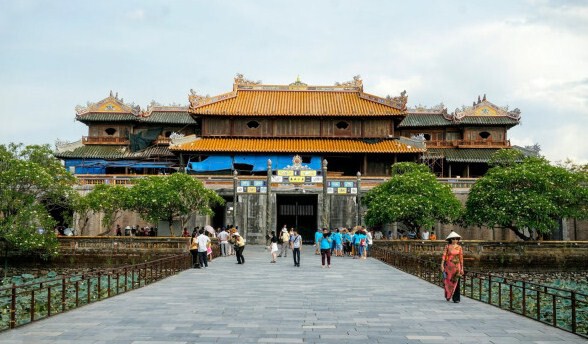
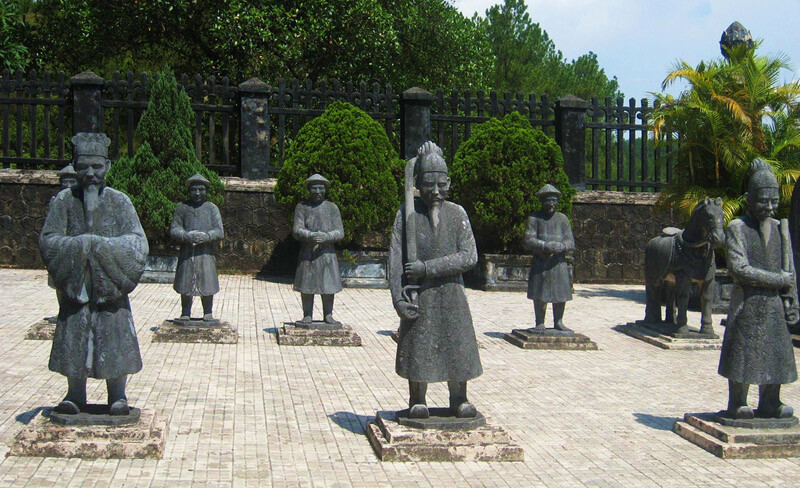
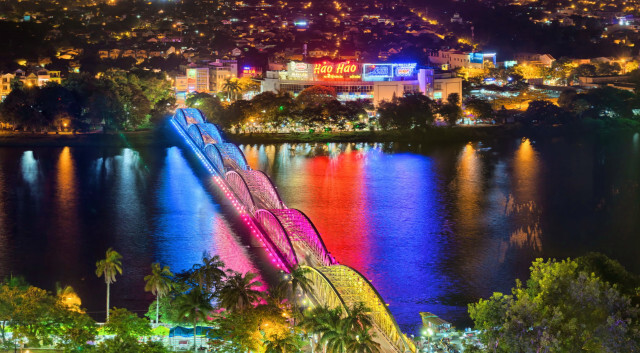
CLASSIC SIGHTSEEING
Hue is the only city in Vietnam that has the harmonious combination of architecture, culture and nature. The city is protected by Ngu Binh Mountain and fertilized by the Perfume River. The best way to visit Hue and learn about its historical stories is with an escorted tour by private car and an experienced guide. You will find Hue much more interesting when you know the stories hidden behind the moss walls. Each tomb is a full life story of its king, his knowledge and his rule.
If you’re an independent traveler, you can take a walk to the Royal Citadel. And if walking to the king tombs and pagodas might be too far for you, you can rent a motorbike or bicycle. Of course, motorbike is easier and more popular. Your time in Hue can be planned with a full day to the city’s highlights, a half day to Hue countryside by bike, a half day cooking class, a full day to DMZ, a day or two days to Bach Ma National Park and even a few free days at Thuan An Beach. Many choices, depending on what you like.
FAMILIES
Hue is a good place for your children where they can learn about the history of an Asian country including the feudal dynasty, French colonial period and Vietnam-American war. Walking in the Imperial Citadel, the king tombs and other places in Hue is considered as outdoor study activity. Your kids can also join in a cooking class where they will learn how to cook Hue royal cuisine, plate decoration, and fruit carving.
Biking tours to the Hue country side, village market or gardening can also be interesting for children, and we can recommend routes appropriate to their age.


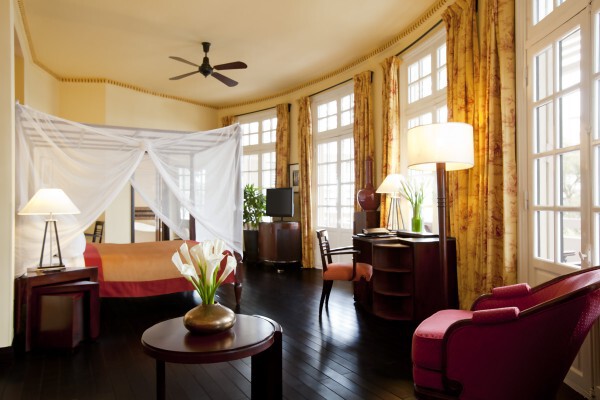
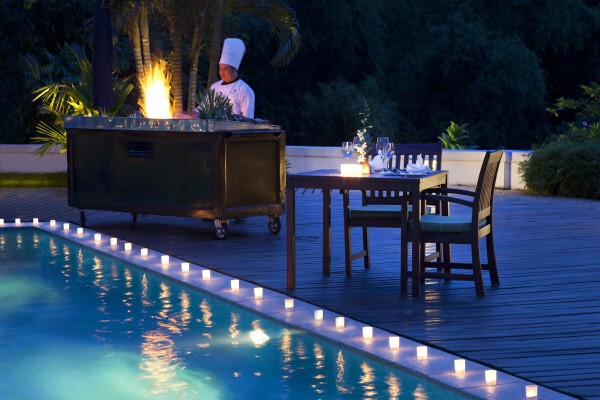
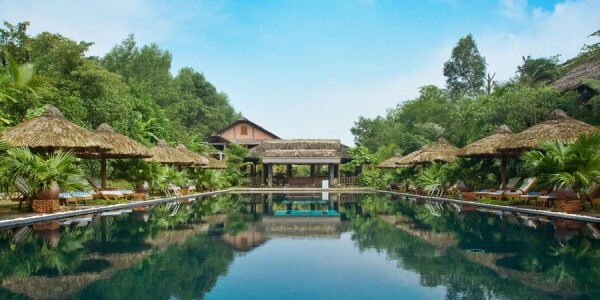
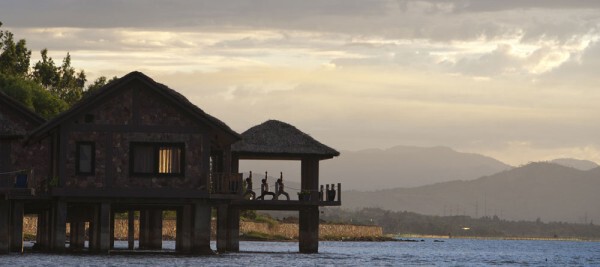

HONEYMOON, RELAXING
Hue has many good hotel options for honeymooners. If you combine your honeymoon trip with sightseeing, a hotel in city center is my suggestion. And your first choice can be La Residence Hotel, formerly the residence of the French Colonial Governor in early 1900s, restored and converted into the best five-star boutique hotel. This charming and art-deco hotel is located on the Southern bank of Perfume River, overlooking the Imperial Citadel. Their superior room is with a garden view, small and nothing special. I suggest you choose the Superior River (this room type is always fully booked), Deluxe River or Deluxe Colonial for your honeymoon stay. These rooms have an amazing view of Perfume River or Hue city!
Second choice would be the Honeymoon bungalow at Pilgrimage Village. This garden house resort is located in a rustic village setting surrounding by lush tranquil gardens, 4km from Hue city center. The Honeymoon bungalow offers a spacious bedroom, open-air marble bathroom, thatched roof design, spacious terrace, and lake view.
If you want to stay at an oasis, away from the noisy and chaotic city life, Vedana Lagoon is a good option. The resort was built on a picturesque surface of peaceful and calm lagoon, 45-minute drive from Hue city. The resort has 27 bungalow and villas, stretching from the hill side down to the water. All are designed to maximize the panorama view of the mountain and the sunset over the lagoon. Rooms are spacious and elegant with decoration of natural materials and traditional Vietnamese elements such as local textiles and handicrafts.
FOOD
Hue cuisine is renowned all over Vietnam. In every other city, you can find Hue cuisine–Quan Hue (Hue Restaurant), Bun Bo Hue (Hue noodle bowl with beef slice, pork, bean sprout, herbals…), Banh Hue (Hue cakes). Hue street food is various, delicious and cheap. You can spend from 1.5$ for a big Hue noodle bowl to 10$ for a set menu with 5-6 different dishes at a garden house restaurant.
A Hue dessert will cost less than 1$. If you want to eat like a king and queen and have a little fun, pay a little more and you can wear a king or queen costume, and enjoy royal foods on plates decorated with dragon and peacock fruit carvings while a band plays traditional music for you!
Some of our clients said they wished they had spent more time in Hue…when we ask what they would do more of, they usually say “Eat!”. So if your thing is local foods, you may want to plan one more day here to relax and eat.
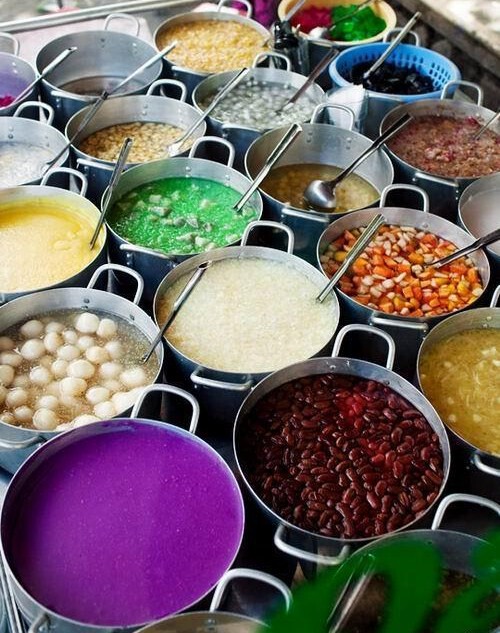

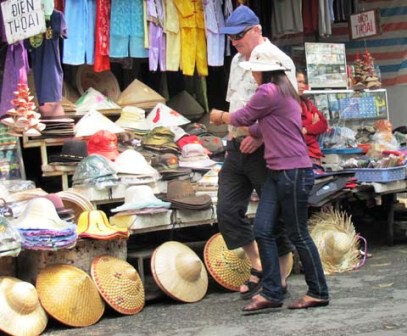
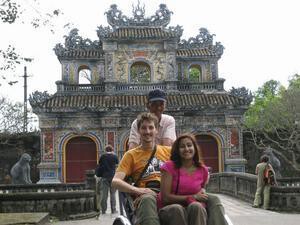
WHAT TO EXPECT
When you walk along the streets at night or daytime, some rickshaw riders or souvenir sellers may follow you and persuade you to buy something. If you are interested in, stop and bargain. Starting from 50% off and raise the price up little bit if you really like the thing. If you don’t, smile, say “NO”, and keep going. They will leave you and find other tourists instead.
Otherwise, Hue is a peaceful and friendly city. Nowhere else in Vietnam will you find such interesting historic stories, perfect Oriental architecture and colorful traditional culture as in Hue.
Dry season is the best time to visit Hue, but the temperature can reach up to 39 to 40 degree Celsius, so don’t forget to bring big bottles of water to stay hydrated and don’t walk in the Imperial citadel or in the King Tombs at noon time–the heat from the sun, bricks, concrete, and ground could give you sunstroke!


 Tiếng Việt
Tiếng Việt Français
Français 日本語
日本語 한국어
한국어 中文 (中国)
中文 (中国)